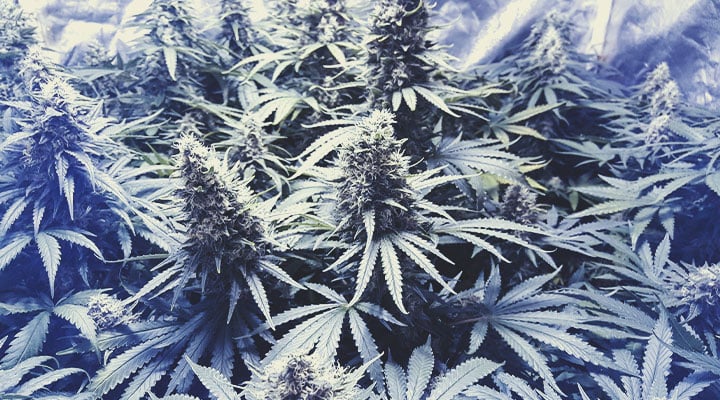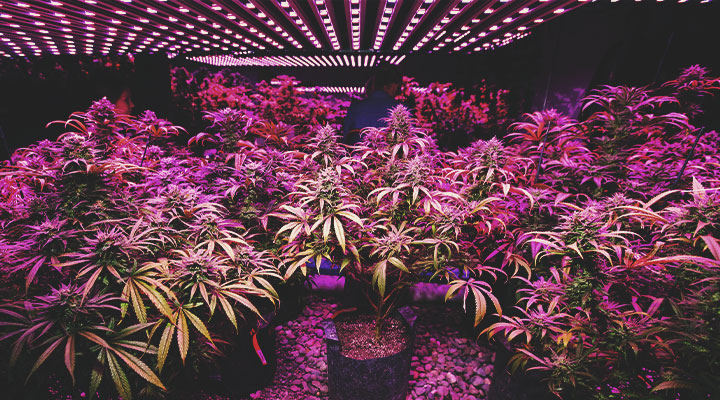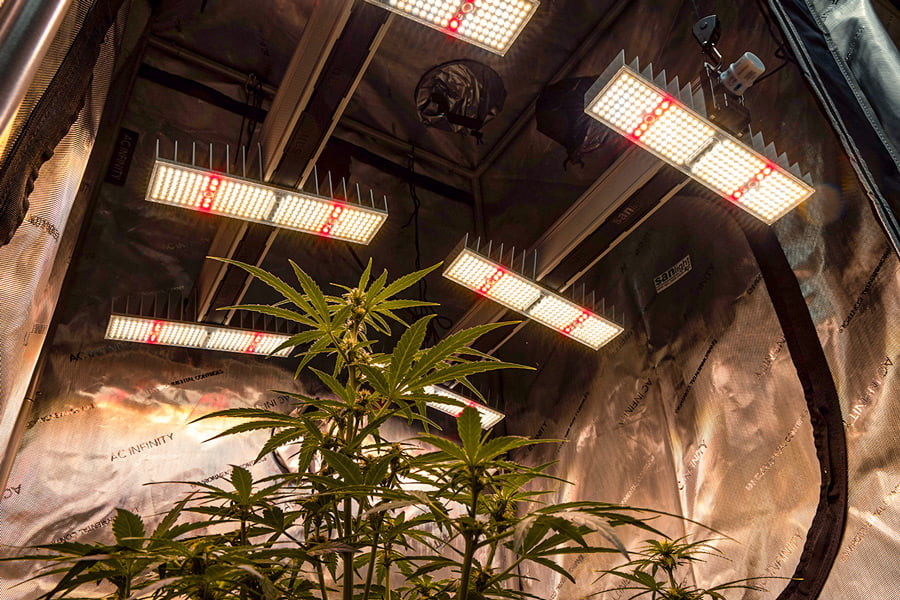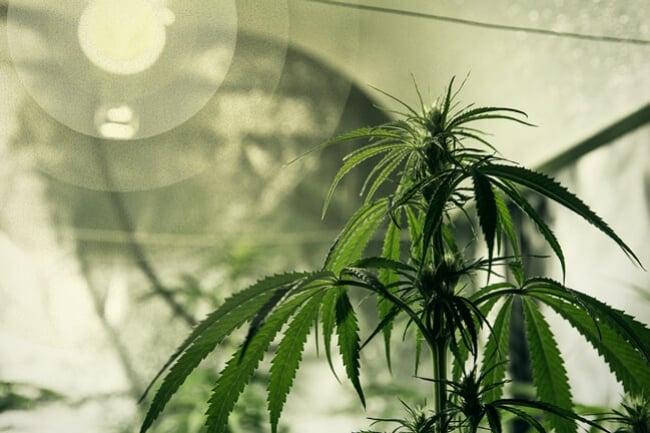.

PPFD, PAR, Lumens, and Foot-Candle for Growing Cannabis
You might have come across terms like LUX, PAR, PPF, or PPFD when shopping around for grow lights, but what do they mean for your cannabis grow? Join us as we unravel the mystery of all those letters and numbers on the side of your grow light packaging. Find out which ones you need to pay attention to most for the biggest and best yields.
Many of the terms associated with indoor grow lights can be very confusing. Even when you think you understand them all, another one will show up on the side of a box, and you'll wonder, “What does this one mean?”.
We’re talking about LUX, PAR, PPF, PPFD, and lumens, to name but a few. Do you need to pay attention to them all? Which is the most important? What do they mean for you as a cannabis grower? This article aims to answer all of these questions to help you "see the light" and select your grow lights with confidence.
First, we should learn a little of the basic science about light, including why plants need it.
What Is Photosynthesis?
Photosynthesis is the process by which plants use sunlight, water, and carbon dioxide to create energy, releasing oxygen as a byproduct. The prefix “photo-” refers to light, and the suffix “-synthesis” refers to the fact that new compounds are created, or synthesised.
The process occurs within chloroplast membranes called thylakoids, which are filled with chlorophyll. Chlorophyll is a pigment that gives plants their green colouration.
Interesting fact: the reason we see plants as green is because chlorophyll absorbs red and blue light from the visible spectrum, reflecting green light. Differentiating between red and blue light when growing is actually essential to your plants' proper development.
Once chlorophyll has extracted energy from light, this energy is then applied to fix carbon dioxide (CO₂) and eventually create sugars, which the plant uses for energy. This latter process is known as the Calvin cycle.
Visible Light vs Invisible Light
Light plays a crucial role in many other plant processes—such as photomorphogenesis –– determined by the light spectrum (blue and far-red spectrum) –– and photoperiodism— determined by the number of hours of light. As mentioned above, red light, for instance, is most beneficial for plants that are developing flowers, as the natural light spectrum is redder at the end of summer and the beginning of autumn. More on this shortly.
To explain the different responses, we first need to understand light itself. Light is a state of radiation in electromagnetic waves, and can be described in terms of three physical properties:
- Intensity (amplitude)
- Frequency (wavelength)
- Direction of vibration (polarisation)
It's easier to talk about wavelength over colour when describing the light spectrum. This is because visible light (wavelengths between 400 and 700 nanometres) incorporates less than 1% of the full electromagnetic spectrum. Visible light differs from the scope of light used for photosynthesis. This fact is crucial to understanding why we have several terms for describing light in relation to plants.


Why Light Measures Are Essential to Plants
The shorter the wavelength of light, the higher the energy content. Energy is indeed important for photosynthesis, but light also has another job—acting as an “information source” for plants.
Different light spectrums induce in plants a certain type of environment response, informing them of how they should survive, thrive, and reproduce. Thus, light composition is as essential to the plant as light energy. Plants use unique pigments, or photoreceptors, that are sensitive to different wavelengths to “take in” the information given to them by the light spectrum.
A light spectrum in the scope of 400 to 700nm induces growth and development, and UV (100–400nm) and infrared (700–800nm) light play a role in plant morphogenesis—which is essentially the process of plants developing their physical form and external structure.
Learn how to translate lux to PPFD, optimise your canopy, and fine-tune airflow with the Pro Growing Guide.
Free Advanced
Growing Guide!

How Do Plants React to Different Light Spectra?
Now that we’re aware of how the light spectrum and plant photoreceptors drive plant development, we need to look at the plant's response to different light spectra in the "visible" light category.
The three primary colours of light are red, blue, and green. As mentioned previously, chlorophyll tend to absorb red and blue light, and reflect green. It’s important to note that while different spectra may become more or less dominant throughout the year, plants in nature will always be receiving light that is white overall.
-
Blue Light (400–500nm)
Blue light is crucial at the beginning of a plant’s development. It increases the production of chlorophyll and triggers rapid, healthy root development. Some seeds won't sprout at all without blue light. Plants that receive adequate amounts of blue light will have strong, healthy stems and leaves. Blue light is required most during the seedling and vegetative stages since it inhibits the internode elongation leading to more compact plants.


-
Green Light (500–600nm)
Green light facilitates human vision. Is it mainly important to diagnose several nutritional problems, diseases and pests. Plants do not absorb much green light, nor do they use it for photosynthesis, so it doesn’t affect growth. Green light can be used to see the plants during the dark phase without interrupting the flowering process.


-
Red Light (600–800nm)
Red light is needed during the vegetative and most during flowering to produce high-quality, abundant flowers. However, some degree of red light is also essential for root growth and bulb development in a plant's early life. Red light is the most efficient light to promote photosynthesis.


Understanding the Different Ways to Measure Light
Now that we know a little about light, and how plants use it, we can look into the different ways of measuring light for the purposes of growing cannabis indoors.
-
Foot-Candle
A foot-candle is a measure of light intensity. It does not measure light at the source. Instead, it measures the brightness of the area being illuminated. One foot-candle equates to one lumen of brightness per square foot, measured a foot away from the light source.
You can measure foot-candles using a light meter. Light meters use a sensor to convert light energy into an electrical charge that renders the user a reading. Most light meters allow you to read results in lux or foot-candles. Just place the meter on the surfaces you want to measure, and it'll give you a reading.
-
Lux
Lux is a measure of how much light is received by a surface. Lux is similar to foot-candles, but it measures light in square metres instead of square feet. If you need to compare the two, remember that one foot-candle is 10.76 lux. Lux can also be measured using a light meter.
Foot-candles and lux are rather not good instrumental measurements for understanding how to set the lighting configuration in your grow room but they can give us better indication than our own eyes. A light meter helps you to know whether the room can be adequately lit or whether you need to rethink your choice of grow light.
-
Lumens
Lumens measure how much visible light is emitted by a source regardless of the surface. Lumens and lux can get easily confused. To illustrate the difference: while a grow light produces 50.000 lumens, in a grow tent of 1 square meter the readings will be 50.000 Lux. However, putting the same grow light in a grow tent of 2 square meter will read 25.000 Lux.
The candela is the foundation unit of luminous intensity (a single lit candle gives off roughly 1 candela). A lumen is one candela per steradian (an area in a cone shape starting from the light source), and is an accurate measure of brightness.
Lumens should not be confused with watts, which is merely a reference to the energy consumption of a light source. Most light meters will convert lux to lumens for you. You can also work it out for yourself, using the formula: lumens = lux × area.
-
PAR
PAR stands for photosynthetic active radiation and describes the wavelengths of light within the visible range of 400–700nm. It is defined as the type of light required by the plant to perform photosynthesis.
To measure PAR, you will need a PAR meter or a spectroradiometer. PAR meters provide valuable data on the total amount of photosynthetic light transmitted to the sensor. PAR is calculated using a specially calibrated sensor that measures quantum flux, which is the amount of photosynthetic light hitting the sensor.
-
PPF
You may have noticed a photosynthetic photon flux (PPF) specification on your grow light packaging. This term is one of the most important parameters to judge a grow light. PPF depicts the measurement of PAR as the number of photosynthetic photons released from a source per second.
Higher PPF numbers equal higher amounts of potential light output. Still, it can also be misleading based on the light's total shape and size. PPF measurements may tell you how much "useful" light your fixture produces, but not how much is received by the plant. You can convert lumens to PPF using an online calculator.
-
PPFD
Photosynthetic photon flux density (PPFD) measures PAR delivered to a specific area per second. PPFD is the only measurement informing us of the amount of useful light delivered to and absorbed by the plant.
You can actually measure PPFD using a spectroradiometer. To see how efficiently your grow lights are working, continually measure PPFD at different heights and areas of the canopy. The closer the plants' light source, the higher the PPFD reading. Moreover, the centre of a light's beam has the highest PPFD reading. Therefore, adjusting the height and density of your light fixtures will directly affect the PPFD conditions of your crop’s canopy.
It is possible to convert lux and foot-candles into PPFD and vice versa, but it gets pretty confusing. However, many online calculators can give you an estimation.
How Do These Values Relate to Growing Cannabis?
We know it can be confusing differentiating and understanding all of the abovementioned lighting terms and measurements. Therefore, when it comes to cannabis cultivation, we would recommend concentrating on the measures most important for plant growth. This would include PAR, PPF, and PPFD. These figures will tell you how much light your plants are receiving and actually using, as opposed to other information that doesn’t directly impact the growth and development of your specimens.
-
Daily Light Integral (DLI)
DLI is the total number of photosynthetically active photons that lands on a square metre over 24 hours. It is measured in the form of moles of light per square metre per day.
Think of it as the accumulation of PPFD over a full day, or the plant's daily light intake. Fruit or vegetable-bearing crops (including cannabis) need between 20 and 40 moles of light per day.
Optimising Your Knowledge in the Grow Room
To maximise your yield, always aim for 40 moles, or 40,000,000 μmol, per day. Here is how much PPFD is needed per second for each phase of cannabis growth to achieve the DLI of 40 moles of light per day.
- Seedling phase (18hr cycle): 200–300 μmol m-2 s-1
- Vegetative phase (18hr cycle): 617 μmol m-2 s-1
- Flowering phase (12hr cycle): 925 μmol m-2 s-1


When choosing grow lights for cannabis, it is essential to check the technical specifications to determine if they are strong enough to get the job done. Of course, this doesn't mean that you have to buy the most expensive lights there are.
Still, it does mean that you should research each of these specifications in relation to your cannabis plants to find a grow light that will fully serve your needs. This is especially true with PPFD, as this is arguably the most insightful value for growers—it tells you exactly how much useful light your plants are absorbing at a certain distance from the grow light.
Hopefully, this article has helped you understand the terms on your grow light packaging, particularly those that have the greatest impact on a successful harvest.








































